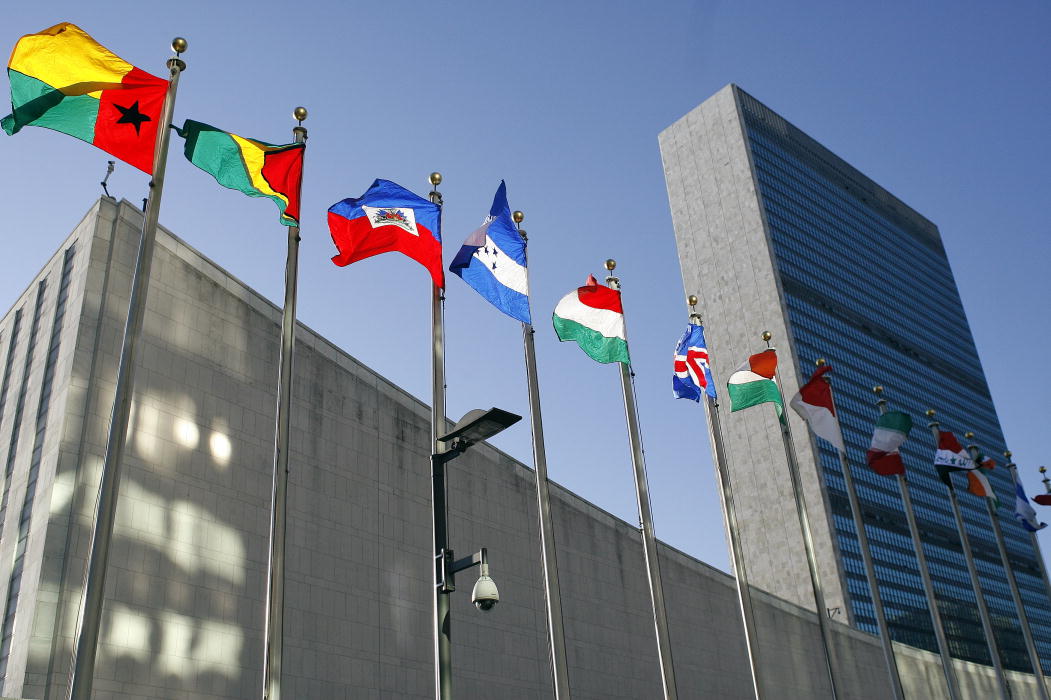For most people in the foreign policy world, the annual opening of the United Nations General Assembly in New York each September tends to elicit reactions ranging from exasperation to eye-rolls.
Among journalists, there’s a too-cool-for-school attitude toward UNGA. It’s hip to complain about it, and I understand why. The logistics of covering world leaders at the UN during High-Level Week can be a nightmare. It’s not a pleasant experience, like, say, covering a national security conference in Aspen, Colorado, in July. It really is exhausting.
Among the broader foreign policy commentariat — think tankers and the like — there’s a broadly cynical attitude toward UNGA: Lots of speeches, but no real action — it’s self-serving pageantry. I get that too. There’s definitely a superficiality to it. Important people (and people who think they are important) make grandiose pronouncements about the state of the world in a building that does not seem able to live up to our expectations for it.
But that’s not me. I like UNGA because I’ve not grown cynical about the prospect of international cooperation to solve some of our great global challenges. I’m 43 years old and have been covering UNGA since 2005. You would think I’d grow jaded, particularly now that we are in a very difficult period for multilateral diplomacy, at least compared to the earlier times in my career.
But I still have hope — and tons of evidence — that the UN is a place where well-meaning people come together to make the world a better place: one speech, one meeting, one vote at a time.
What happens at UNGA really does make a difference.
Good Stuff Still Happens At the United Nations
Media coverage of UNGA tends to be dominated by what I’ve long called the side-shows. Think: Hugo Chavez performatively calling George W. Bush the devil, Gaddafi’s rambling hour-and-a-half-long diatribe, Netanyahu’s elementary-school-style poster board of a bomb, or Trump’s “little rocket man” outburst. These sorts of things are what people remember from UNGA because that’s what sucks up most of the media attention.
I call these “side-shows” because they stand in contrast to the far more substantive events in New York that get far less attention. But it’s at these high-level meetings, side events, and the like that real progress on some common global challenges is often made.
The single highest-profile example of this is the Sustainable Development Goals, which were adopted at UNGA in 2015. This created a common organizing principle around which the world has decided to tackle a host of challenges, from extreme poverty to biodiversity, and more. At this point, the SDGs have so deeply penetrated the global consciousness that small towns and large corporations are embracing them.
But the adoption of the SDGs in 2015 is the exception to the rule. Most of the time, the in-the-weeds substantive work that happens around UNGA goes relatively unnoticed by most media. This year, for example, there are two “High-Level Meetings” happening during UNGA79, one on antimicrobial resistance and another on sea level rise. Both are global problems that require some level of international cooperation. The misuse of antimicrobials, for example, threatens human and livestock health around the world. It’s not something any one country can tackle on its own. At the meeting next week, diplomats, world leaders, and experts will agree on a coordinated plan to reduce antimicrobial resistance and the deaths that result from it. This is an outcome that benefits all humanity.
The human toll of rising sea levels is also on the agenda at UNGA. Just last week, I was meeting in Geneva with a UN-affiliated official who described the need for international cooperation in helping relocate low-lying coastal communities threatened by rising sea levels. There’s already work underway to that end in Fiji and elsewhere. But there’s no coordinated way the international community can support these efforts. It’s somewhat ad hoc at the moment. To be sure, a High-Level Meeting on Sea Level Rise won’t stop the sea from rising, but it will build some momentum toward creating coordinated ways to help communities deal with the impact. That’s a good thing that will make a real difference in lives around the world.
These two High-Level Meetings are just examples of the substantive work that gets done at UNGA. I can’t imagine they will get much media attention, but I’ll be covering them on the podcast. Because that is what I do. (Subscribe here!)
Then, this year, there’s the Summit of the Future. The idea behind this summit is to revive the UN (and multilateralism in general) so that it is more responsive to future global challenges. The summit is both aspirational in terms of what those living today owe to future generations and technical in terms of specific reforms envisioned for the UN system. But it is important to remember that those deeply involved in the Summit of the Future are not seeking to reform the UN for the sake of reforming the UN. Rather, they view (as I do) the UN as a vehicle that, in the past, has helped nudge us toward a better present. They view the present as an opportunity to build toward a better future.
My point is that if you follow UNGA — not just the big speeches, but the entirety of it — you won’t be cynical. Rather, you’ll see many good-faith efforts to tackle common global problems to make the world a little bit better for everyone.
That’s why I keep the faith. I hope you do, too.
Consider supporting our work and getting posts like this delivered directly to your inbox.
